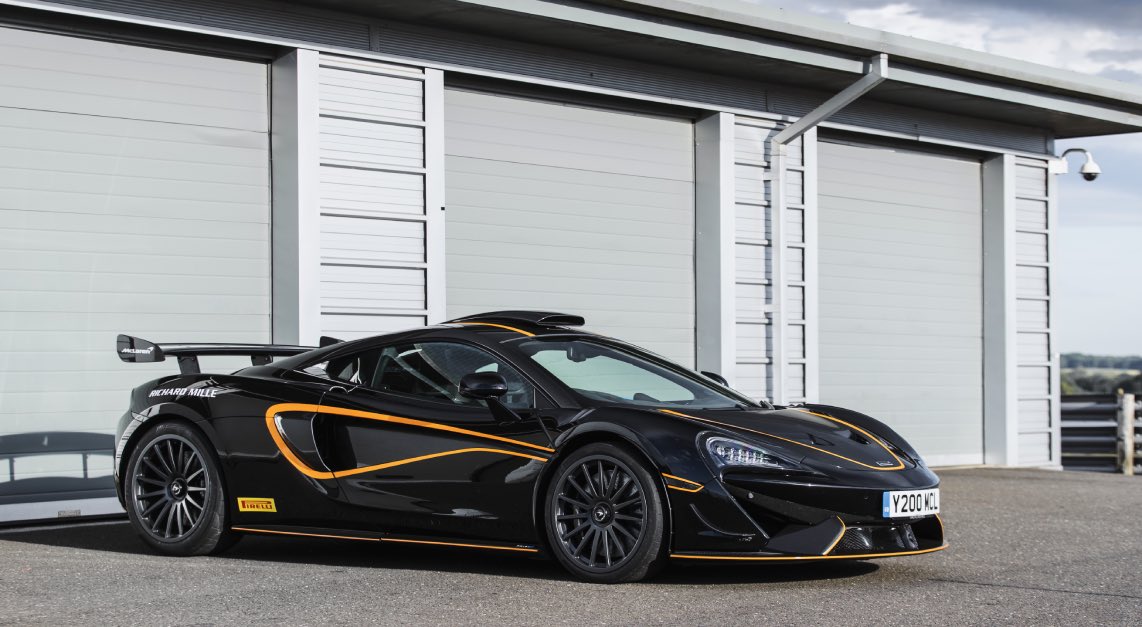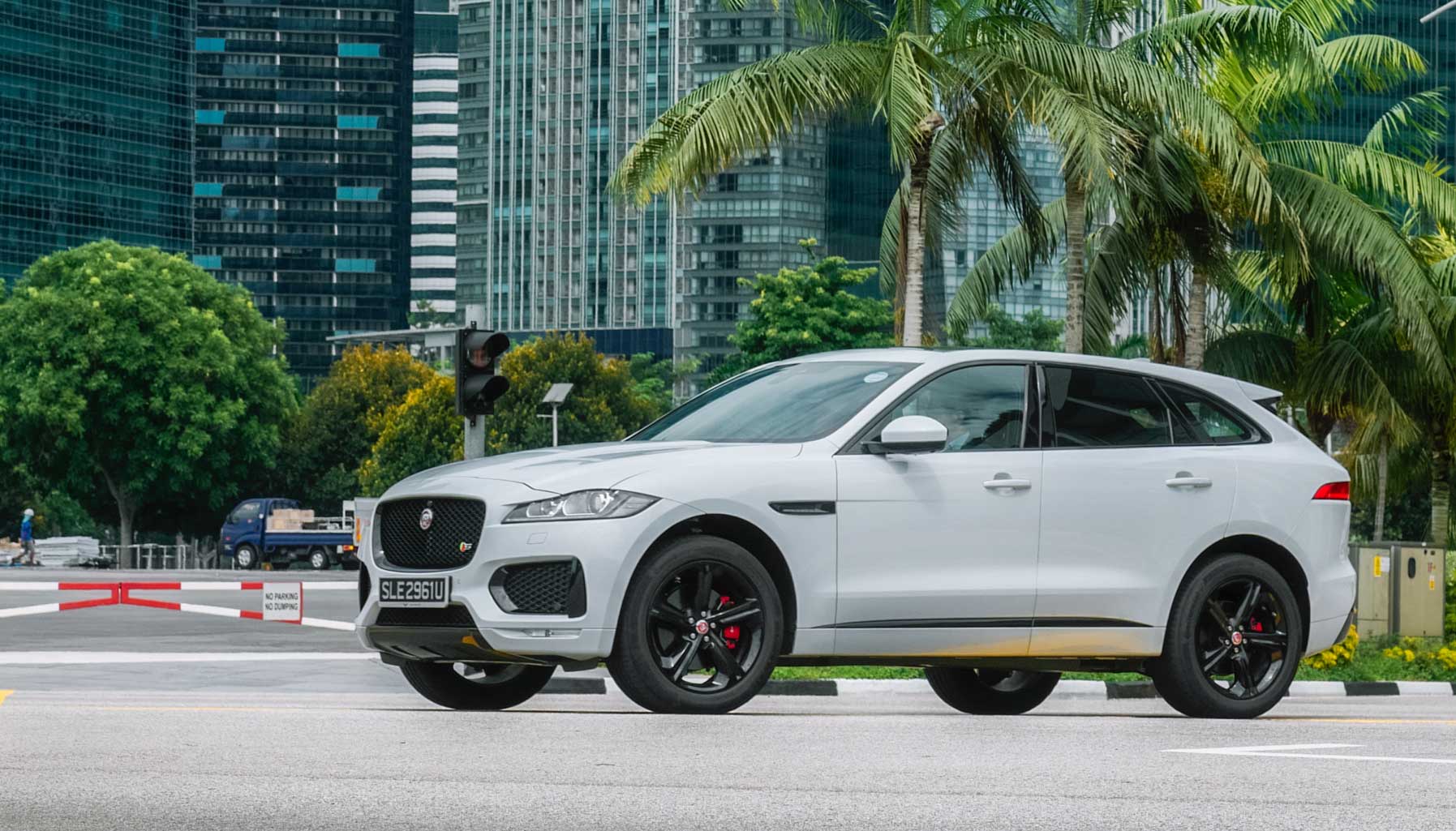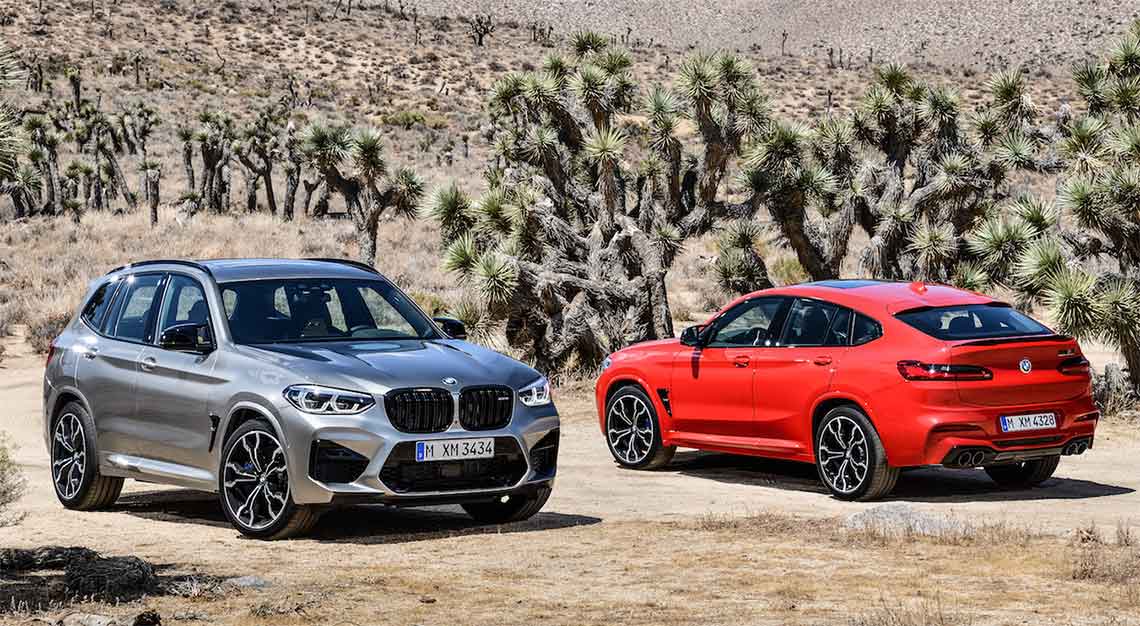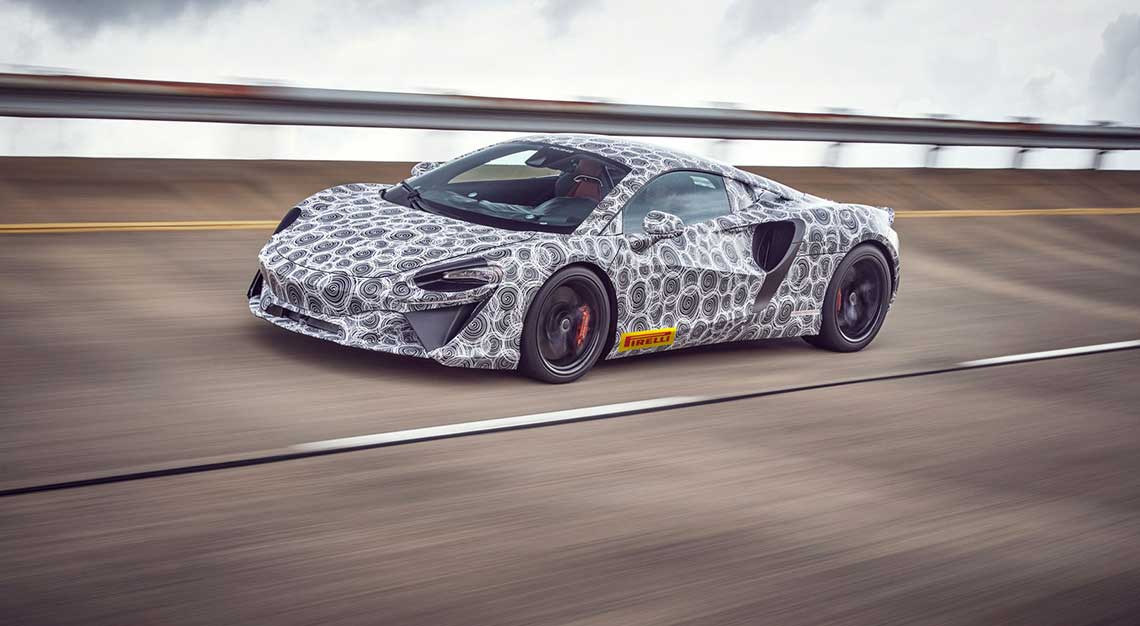With the new models from McLaren, Ferrari and Lamborghini, speed is served in three unique ways. The common denominator? More is better, of course

The track athlete: McLaren 620R
As I pull up to the hotel entrance, the 3.8-litre twin-turbocharged V8 shudders the ground beneath my McLaren 620R. Also trembling, with palpable excitement, is the parking concierge, who appears barely old enough to drive. “Are those the Senna racing seats?” he blurts, transfixed, ignoring the other vehicles. For a model comprising just 225 examples, the 620R has a reputation that precedes it.
The grand finale for McLaren’s Sports Series, the 620R is a street version of the FIA-homologated 570S GT4 racer, with the same engine and carbon- fibre chassis but unconstrained by motorsport regulations. On an open stretch of freeway, the 611bhp coupe, with 620Nm of grunt available at 3,500rpm, feels every bit the pole-position competitor, though the dual-clutch transmission manages the seven speeds with such stealth precision that it barely registers. Increased grip is thanks in part to a new front splitter, air intakes and vents on the carbon-fibre hood, plus the huge, three-way-adjustable rear wing. Altogether, it amounts to 185kg of downforce at 250km/hr.
The ripping engine and high-tech aero combine to help the 1,282kg (dry weight) coupe hustle to 97km/hr in 2.8 seconds before topping out at 322km/hr. Velocity is reversed via the indefatigable carbon-ceramic brakes fitted with forged-aluminium calipers. An optional motorsport-grade damper enables the aluminium wishbone suspension to be optimally customised for closed-course performance, while the road- focused adaptive damper found in my test model allows for three drive modes – Normal, Sport and Track – throughout the various handling and power-train settings.
Any sane buyer will opt for the track-oriented suspension because to choose otherwise is to miss the point of the car entirely. To maximise weight savings, the glovebox and carpeting have been scrapped from the already spartan interior, and other sound-dampening is minimal. At idle, the mirrors vibrate so hard as to be unusable. Induction sound from the optional roof-mounted air intake adds to the cacophony.
Given all the noise, only those with a twisted sense of humour will option the 12-speaker Bowers & Wilkins audio system, though dedicated racing types will gladly upgrade to the Pirelli tyres and six-point cockpit harness.
As McLaren’s Sport Series swan song, the 620R may also be among the last to rely solely on combustion, if the new hybrid Artura offers any sense of direction. One thing’s for sure: it’s on the short list for anyone looking to incite fear and envy at the motor club – not to mention on the vision board of a certain young valet.

The fashionably late: Ferrari 812 GTS
Let’s start by bringing the bottom line up top: the Ferrari 812 GTS (Gran Turismo Spider) is the most powerful production convertible currently on the market. But there’s more to this car’s story than that superlative. Although Ferrari’s formula for the ultimate GT hasn’t changed much in 50 years, this is Maranello’s first production-series, front-engine V12 drop-top since the legendary 365 GTS/4 Daytona in 1969. And from behind the wheel of the new 812 GTS, the wait seems more than worth it.
Anyone familiar with the 812 Superfast will feel at home in the 812 GTS, with both models sharing the same specifications, performance and appearance, at least from the waist down. And those specs are substantial, with the naturally aspirated 6.5-litre 12-cylinder producing 789hp and 718Nm of torque (at 8,500rpm and 7,000rpm, respectively). Equally notable is the smooth and linear power delivery at low revs, with 80 per cent of maximum torque available at just 3,500rpm. As the needle approaches 6,000rpm, however, Jekyll transforms into Hyde. The acceleration is nothing short of explosive, accompanied by an increasingly furious crescendo from the intake and exhaust as the engine wails its way to an 8,900rpm redline. While we never touched the claimed top speed of 340km/hr, we trust the 812 GTS can get there.
Befitting a true grand tourer, the 812 GTS delivers far more than acceleration and speed. Weighing 1,645kg dry, the big GT is as agile as it is quick, with the sporting feel reserved for a rear-wheel-drive configuration and a 47:53 rear-weight bias, both of which promise predictable – and predictably fun – response to driver input. The rear end gladly steps out when urged, though the 812 GTS also benefits from Ferrari’s latest vehicle-dynamics control systems, including Ferrari Power Oversteer, which helps realign the vehicle should a driver attempt to overpower his or her way out of a corner. The seven-speed dual-clutch gearbox shifts instantly and with authority, while the massive carbon- ceramic brakes, filling the 20-inch wheels, quickly drag the 812 GTS to a standstill.
Inside, the leather upholstery and trim are beautifully executed, and the steering wheel is a stroke of ergonomic elegance, with nearly every control function placed within thumbs’ reach. The central tachometer takes centre stage in the instrument cluster, as it should; the lovely analogue display is a welcome carryover in an age of flat, video-game-like screens.
Among thoroughbred supercars, apart from its hardtop Superfast sibling, there really is no GT that matches this model’s pedigree, ferocity and overall presentation – car enough to keep us thrilled for another half-century.

The lightning rod: Lamborghini Sián
Behind the wheel of Lamborghini’s 819hp Sián, I’m tempted to let the hybrid coupe light up the English countryside, a task for which the automaker’s fastest model is perfectly suited. Perhaps too suited: unlike some supercar competition at home in traffic-laden commutes, the Sián is nearly impossible to drive slowly.
At highway speeds, its 785hp V12 and 34hp 48-volt electric motor seem to be just waking up. It’s a car that so demands to be pushed that it should be considered a daily driver only if you work at a racetrack. And so, as quickly as a thunderbolt silencing a crowd, this electrifying model quiets any doubts about the Raging Bull’s first (and, it should be noted, tardy) production foray into hybridisation.
In Italy’s Bolognese dialect, Sián translates to ‘lightning’, a nod to that electric power but equally fitting for its searing top speed of 350km/hr and zero-to-100km/hr sprint time of just 2.8 seconds. Compared to Lamborghini’s Aventador, which is solely reliant on 12 cylinders, the Sián’s added electric jolt is plenty noticeable.
Credit also goes to the advanced regenerative braking system. Specifically developed for the car, the system converts scrubbed speed into available power that’s saved in the energy-storage system until a power boost is requested via the right foot. That added dose of instant accelerative torque is available up to 130km/hr, at which point the electric motor automatically disconnects.
(Get this: that e-motor is fuelled by a lightweight supercapacitor that Lamborghini claims is three times more powerful than a lithium-ion battery of the same weight, while bolstering storage capacity tenfold.)
The Sián’s hair-raising performance is complemented by an equally stimulating aesthetic that offers visual overload from every angle, from its eye-popping rear wing, complete with aerodynamic air streamers, to the bright digital- instrument cluster. And the brand’s trademark hexagon shapes are sprinkled everywhere like visual Easter eggs, including the door mirrors and rear lights. Even the twin exhaust pipes are formed in a six-sided arrangement.
Like that hallmark hexahedron, the cabin feels particularly hard and angular. Those familiar with the brutalist Aventador SVJ will recognise similarly rock-hard seats as well as Lamborghini’s flip-top starter button and the well-hidden indicator and windscreen buttons. But there’s more than a hint of the iconic ’70s Countach as well, most notably in the combination of low-slung seating, high centre console and compromised rear visibility.
There is bad news. The odds of owning a Sián are about the same as catching lightning in a bottle. Of the 82 examples planned (19 roadsters and 63 coupes, figures which, taken together, are a play on the year Lamborghini was founded) all have been pre-sold. But perhaps a trip to Italy is in order. Shortly after my drive, the model I piloted was wrapped in cotton wool and shipped to Bologna to be displayed at the Lamborghini Museum alongside madcap Lambos of yesteryear. While a museum may be an odd place to showcase the future, it might be your only chance to see a Sián in its carbon-fibre flesh.






